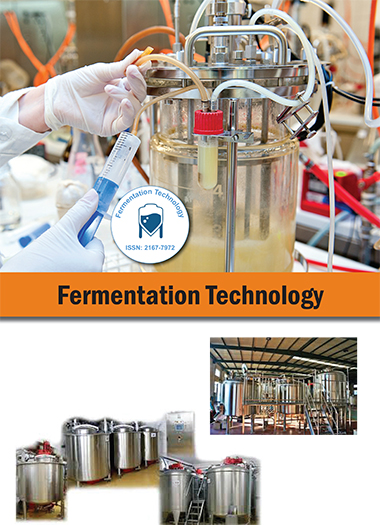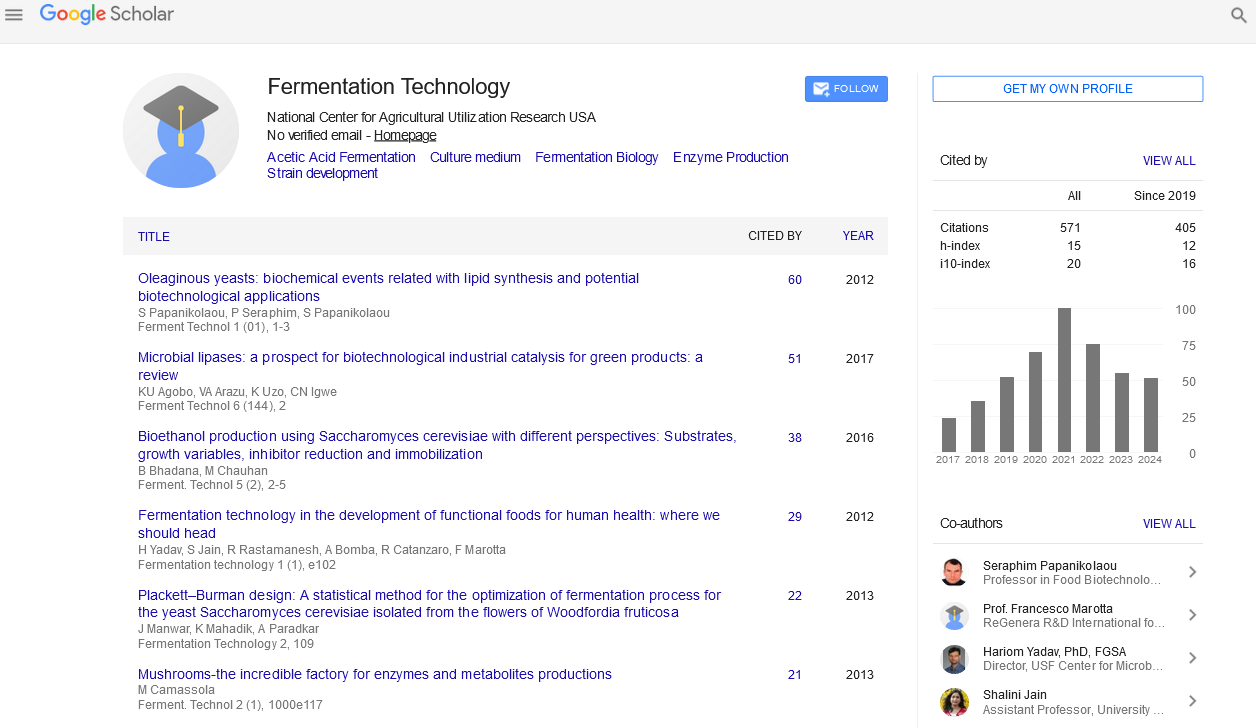Indexed In
- Open J Gate
- Genamics JournalSeek
- Access to Global Online Research in Agriculture (AGORA)
- RefSeek
- Hamdard University
- EBSCO A-Z
- OCLC- WorldCat
- Publons
Useful Links
Share This Page
Journal Flyer

Open Access Journals
- Agri and Aquaculture
- Biochemistry
- Bioinformatics & Systems Biology
- Business & Management
- Chemistry
- Clinical Sciences
- Engineering
- Food & Nutrition
- General Science
- Genetics & Molecular Biology
- Immunology & Microbiology
- Medical Sciences
- Neuroscience & Psychology
- Nursing & Health Care
- Pharmaceutical Sciences
Abstract
Impact of Different Plant Secondary Metabolites Addition: Saponin, Tannic Acid, Salicin and Aloin on Glucose Anaerobic Co-Digestion
Ngoma PH, Hiligsmann S, Zola ES, Ongena M and Thonart P
Vegetal waste and some wastewater of agro-food industries contain plant secondary metabolites (PSMs). It was showed in nutritional researches that these substances such as saponins and tannins reduced the methane production in the rumen. To our knowledge no study was done in the waste treatment domain to evaluate the inhibitory effect of the principal glycosidic metabolites from the wastewater or vegetal waste on their own methaneproducing anaerobic digestion. Therefore in this paper BMP tests were carried out at 30�C with four commercial PSMs (CPSMs) in mixture with glucose monohydrate (Gl) used as control sample. These CPSMs were saponin from Quilaja saponaria Molina Pract (Sap), tannic acid (Tan), salicin (Sal) and aloin from Curacao Aloe (Alo) representing respectively saponins, tannins, alcoholic glycosides and anthraquinones sources. Acidogenesis and acetogenesis were recorded for all the mixtures of Gl and CPSMs; however their conversion rates decreased with the increase of the concentrations of CPSMs. By contrast, the methanogenesis was inhibited at concentrations of CPSMs above 0.3 g/l. The inhibition degree for aromatic compounds on the anaerobic biodegradation of Gl seemed directly to depend on the numbers of benzene rings in the medium and the synergism. Thus, the highest inhibition of the biogas production from Gl was recorded for Alo, followed by Sap, Tan and Sal. However, the highest inhibition of the methane production from Gl was recorded with Sap, Alo, Tan and Sal. It was supposed that the toxicity potentials of these PSMs on their own biomethanization would be in following decreasing order: Sap or Alo, Tan and Sal. Therefore, the concentration of PSMs alone or in mixture in a digester should be below 0.3 g/l for a better methanization.

